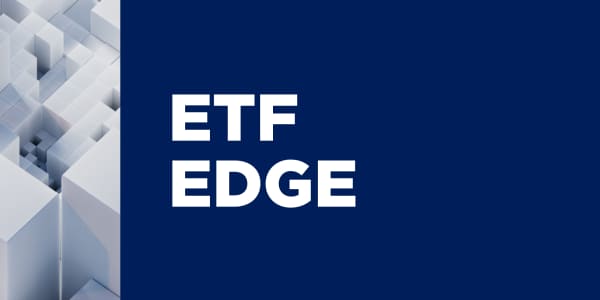
The market's swings may be dizzying, but they can be avoided, ETF experts say.
As U.S. stocks feel the heat of an escalating trade war with China, investors might be looking for stocks with lower volatility, or the tendency to make big moves, than the rest of the market — and that's where low-volatility ETFs come in, says Alfred Eskandar, co-founder, president and chief operating officer at Salt Financial.
"Days like this are the greatest advertisement for low-volatility funds and stocks," he told CNBC's "ETF Edge" on Monday as the major averages deepened their losses. "You're not going to get as hurt as far as the market moves down, so they're a little bit of a cushion."
Eskandar, whose company offers its own low-volatility ETF, pointed out that in the last 70 years, the one sector that has outperformed the rest isn't what you might expect.
"Nobody would've picked consumer staples, but that's the sector that has outperformed. Not technology, not financials," he said. "So if you have exposure to that sector, during market downtrends like this, you're going to be cushioned going into the next period."
Enter iShares' three minimum-volatility ETFs: the iShares Edge MSCI Minimum Volatility USA ETF; the Europe-centered iShares Edge MSCI Minimum Volatility EAFE ETF; and the emerging-markets-focused iShares Edge MSCI Minimum Volatility Emerging Markets ETF.
Their stated goal is to offer investors "market-like returns" while keeping a lid on risk. To do this, they combine a form of factor-based investing called smart beta with portfolios that hold historically low-volatility stocks.
The U.S.-based ETF, for one, has only 14.5% of its portfolio allocated to its top holdings, another way to protect against big single-stock swings. Those top holdings include stocks like Visa, McDonald's and PepsiCo, which to many investors represent safe investments during times of market turmoil.
Tom Lydon, editor and proprietor of ETFTrends.com and the president of Global Trends Investments, attributed this kind of portfolio makeup to how growth- and momentum-focused the has become over the years.
"When you look at low-volatility ETFs, there's more consumer staples," he said, also on Monday's "ETF Edge." "No matter what the market's doing, people are still going to buy McDonald's. They're still going to buy Pepsi. They're still going to take their trash out. Those types of things are always going to be stable."
So, while Lydon understood why investors might be choosing flight over fight in this pullback, he didn't want them to lose sight of the areas that could bring them bigger gains — or at least a solid hedge.
"Right now, there are a lot of fully invested investors out there that are feeling a little bit nervous. If you feel it's late cycle in the market, you want to take a little bit off the table, that's fine. On the other hand, if you want to downshift a bit, there's some low-volatility ETFs out there," Lydon said.
"Individual investors are under-allocated overseas in developed markets and emerging markets," he continued. "Look to see if you've missed this emerging market move to play it in a low-volatility way. And there's some great low-volatility emerging market ETFs."
All three of iShares' low-volatility ETFs declined by more than 1% in Monday's trading session, with the emerging markets fund being the standout underperformer, down nearly 3%. The Cboe Volatility Index, commonly known as the VIX or the market's "fear gauge," spiked 30% intraday before cooling off slightly by the close.





